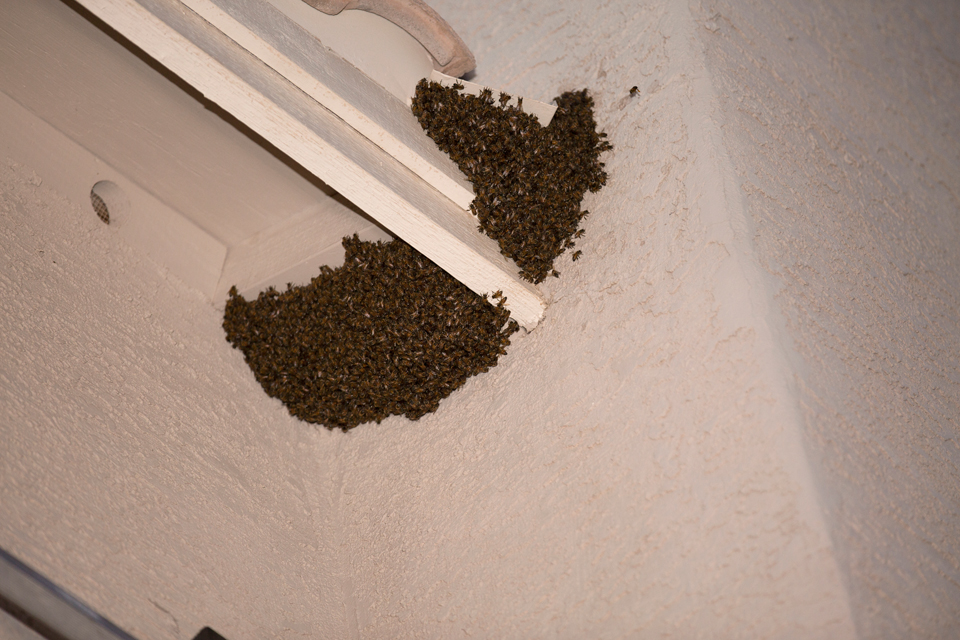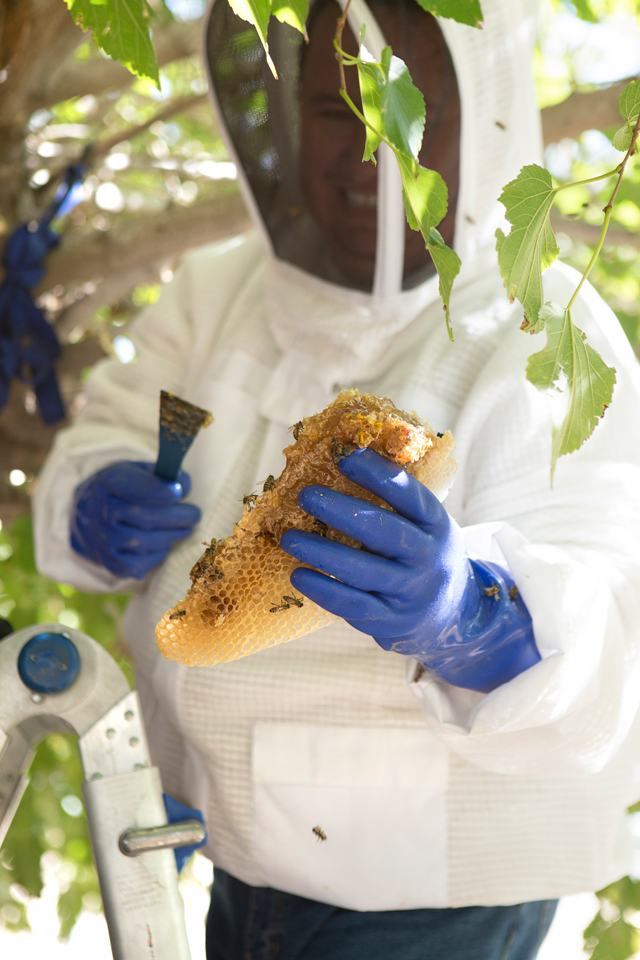Killer Bees
In 1957 the Africanized Honey Bee often referred to as Killer Bee was brought to Brazil in hopes of increasing honey yield, but a swarm escaped quarantine. The species arrived in North America in 1985 and had been cross-breeding with the European bee here in the US ever since. The hot zones for these bees are Arizona, Mexico, Texas, Nevada, New Mexico, Florida, southern California, and noted as far north as Colorado. One hundred percent of all honey bees in Arizona are Africanized unless owned by local beekeepers.

By Sy Maher
Africanized bees find nesting places almost anywhere; walls, ceilings, eaves, meter boxes even old discarded tires. They are dangerous and easily provoked. Not many know what to do when attacked by these bees. Deaths and serious injuries happen.
But, we face another truth. We live in a world where bees are on the decline. Not every hive is savable, but some should be rescued and relocated.
What usually happens is a call goes out to a pest company, and all the bees at a location are destoyed. That was the typical procedure for Stormin’ Norman Pest Control until Ernie and Amy Henson; local family business owners discovered that there is a better, greener, more sustainable way to approach the problem.
They learned how to save the bees, and Luckey Bee Farm was born.

Luckey Bee Rescue and Relocation of bees
Luckey bee strives to rescue and relocate the Africanized bee by introducing the less aggressive European honey bee queen into the hive. They either house the bees on their farm or relocate them to a suitable beekeeper or bee hobbyist.
What to do if you come across angry bees.
- Keep your distance.
- Do not aggravate the bees. Some people think if they throw something at the bees or spray them with a water hose it will make them leave. All this will do is upset them, and they will attack the person trying to drive them away, or an innocent bystander.
- Investigate an area before you begin working outside. Africanized bees see your presence, barking dogs, loud children, motorized items, weed whackers, leaf blowers, lawn mowers, even a car running as an act of aggression against the hive
REPORT BEE ACTIVITY AT ONCE.
IF ATTACKED
- If bees attack, run away as fast as you can, only stop to aid children or the elderly.
- Do not swat at the bees. They see wide fast motion as an additional threat.
- Once stung the stingers release pheromones a potent chemical that attracts and arouses other bees. This chemical lets the other bees to know where to attack.
- Protect your face. Pull clothing up over your face to ward off bee stings
- Avoid getting into the water. Bees will wait for you to surface
- Get into any shelter that will provide a barrier between you and the bees like a vehicle or building
- Call 911 as soon as you can
We all need to bee– safe out there. Protect our loved ones and pets. The bee’s plight is in our hands now. Pesticides and vector control for mosquitos are killing bees. A garlic based fogging solution kills mosquitos and even ticks so poison is not relevant anymore. We can choose sustainability. Rescue bees when we can, and provide lifesaving information to the public so they know what to do when encountering Killer Bees.Remember, one-third of every bite of food we enjoy is on a plate because of bee pollination.



2 thoughts on “Killer Bees”